How does the factory produce staple fiber nonwoven geotextile ?
Polypropylene staple fiber nonwoven geotextile production line:
Polypropylene staple fiber nonwoven geotextiles is produced through specialized equipment using polypropylene resin, cooling masterbatch, color masterbatch, and additives as raw materials.
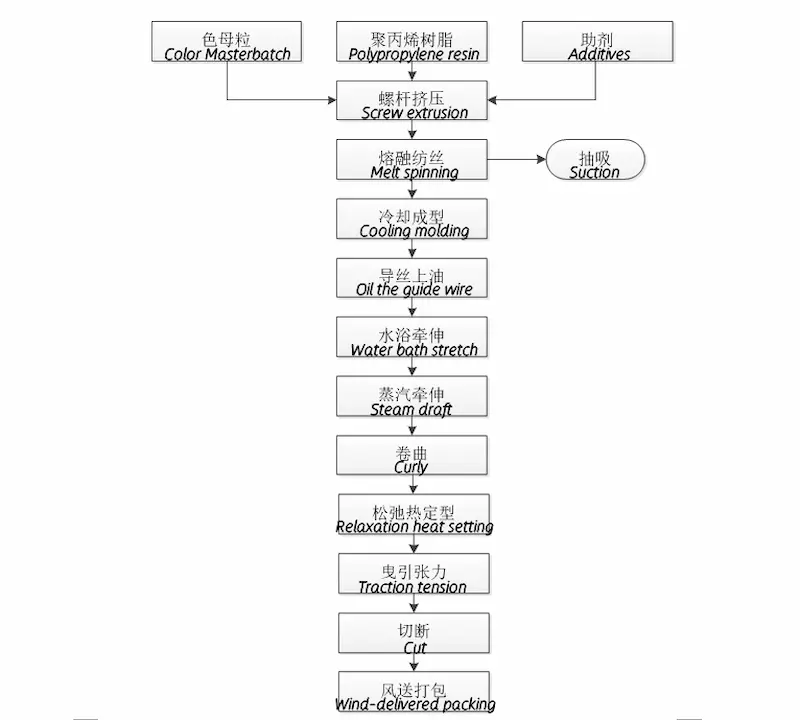
(Production flow chart of polypropylene staple fiber nonwoven geotextiles)
The production line produces polypropylene short fibers nonwoven geotextile, using polypropylene resin, cooling masterbatch, and color masterbatch as raw materials. The polypropylene resin is conveyed by air to the upper hopper and falls into the entrance of the screw extruder by gravity. The cooling masterbatch and color masterbatch are fed into the entrance of the extruder through feeders. The ratio of the two masterbatches is controlled by the rotation speed of the feeder.
The raw materials enter the extruder, where the screw rotates to move the materials forward. An electric heater is installed outside the screw barrel to melt the materials. The molten materials are filtered and mixed by a pre-filter and a static mixer before entering the spinning box. The spinning box contains elements such as a metering pump, a spinning assembly, and a melt pipeline. The heat preservation medium is heat conducting oil. After the molten materials are metered by the metering pump, they enter the spinning assembly in equal amounts and are extruded through the spinneret to form primary fibers. The primary fibers are cooled and shaped by blowing air in an inner ring configuration. The primary fibers pass over an oil roll in an oiling bath containing polypropylene special oil (including softener、antistatic agent、binder, etc.) to give them processing properties. This production line has 6 spinning positions.
After passing through secondary oiling rolls, the fibers from the 6 positions enter a drawing machine for drawing. There are three drawing machines in total, with two-stage drawing. The first stage uses water bath heating for heating, and the second stage uses steam heating. The purpose of drawing is to stretch the fibers through the speed difference between the three drawing machines to achieve a certain strength and elongation rate, that is, to have a certain service performance.
After drawing, the fibers go through a curling machine to curl them, giving them a certain curliness and improving their binding performance.
The fibers are conveyed by a conveyor belt and a swing bucket into a relaxation heat setting machine. This machine stabilizes the drawn fibers, eliminates internal stresses in the fibers, removes elastic deformation, maintains the effects of drawing, and dries them to remove moisture. The relaxation heat setting machine is an oven-type equipment that contains steam heaters and conveyor belts.
After setting, the fibers are cut into a process length of 65mm or 76mm by a cutting machine and then conveyed by air to a baler for packaging.
Medium speed staple fiber nonwoven geotextiles production line:
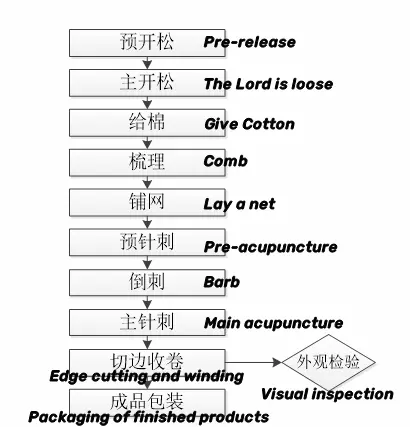
(Medium speed staple fiber nonwoven geotextiles process flow chart)
The production line uses short fibers as raw materials and is made by opening, carding, mechanical netting, pre-needling reinforcement, main needle reinforcement, trimming and winding to produce finished products.
High-speed staple fiber nonwoven geotextiles production process:
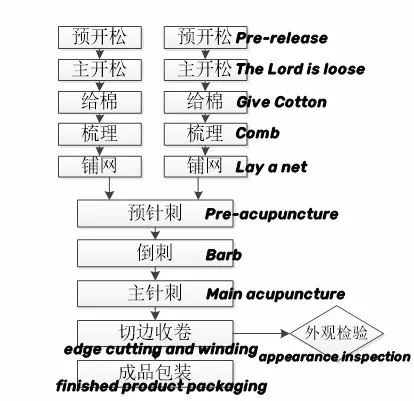
(Process flow chart of high-speed staple fiber nonwoven geotextiles production)
Production line uses short fibers as raw materials. It goes through double opening, double carding, double mechanical web formation, pre-needling reinforcement, main needling reinforcement, and edge cutting and winding to make the finished product. This production line can make products with a density of more than 1000 grams/m2. The products can be used as sliding layers for high-speed rail track plates.
Advanced features:
1. The whole machine adopts PLC+touch screen control, with high precision in quality control.
2. The new feeding cotton box with large storage capacity provides uniform feeding.
3. The double-cylinder double-doffer double-disordered carding machine is used to make the fibers distribute in multiple dimensions in the web, improving the isotropy.
4. This machine can produce woven composite geotextiles. It is made of three layers of geotextiles: an upper layer of short fiber geotextile, a middle layer of woven geotextile, and a lower layer of short fiber geotextile. These three layers are combined using needle-punching technology, making it have the characteristics of high longitudinal and transverse tensile strength, high CBR burst strength, and low tensile elongation at break, as well as the properties of needle-punched nonwovens.
Certificates:
Short fiber nonwoven geotextiles equipment compacting device (patent certificate)
Woven composite geotextile (patent certificate)
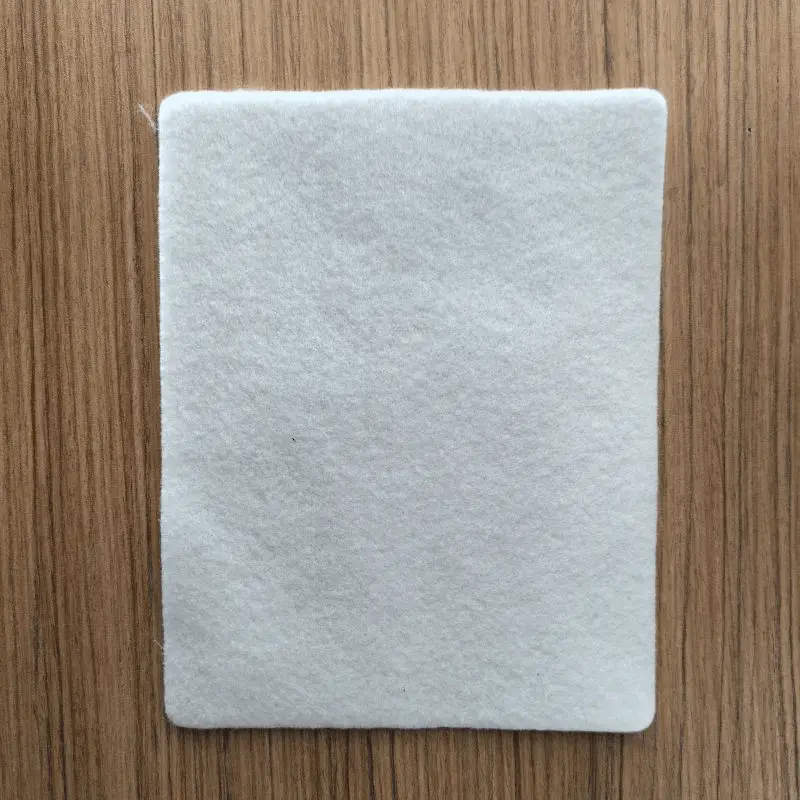
634.webp)
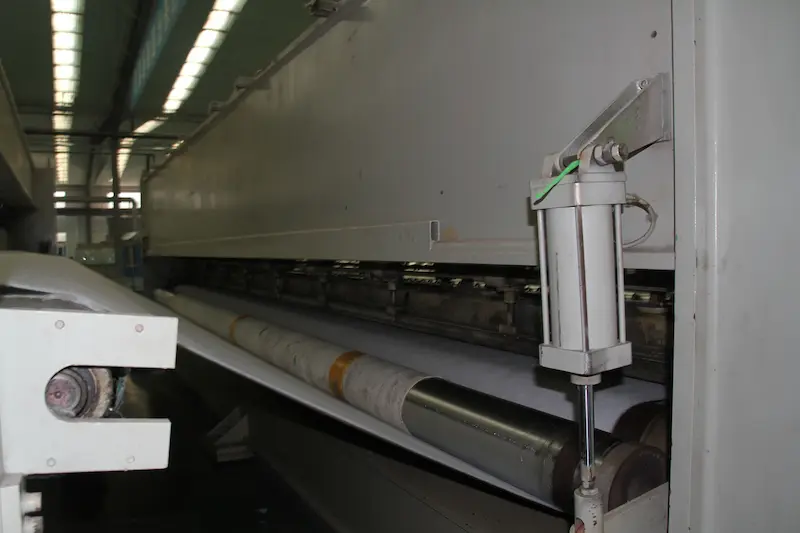
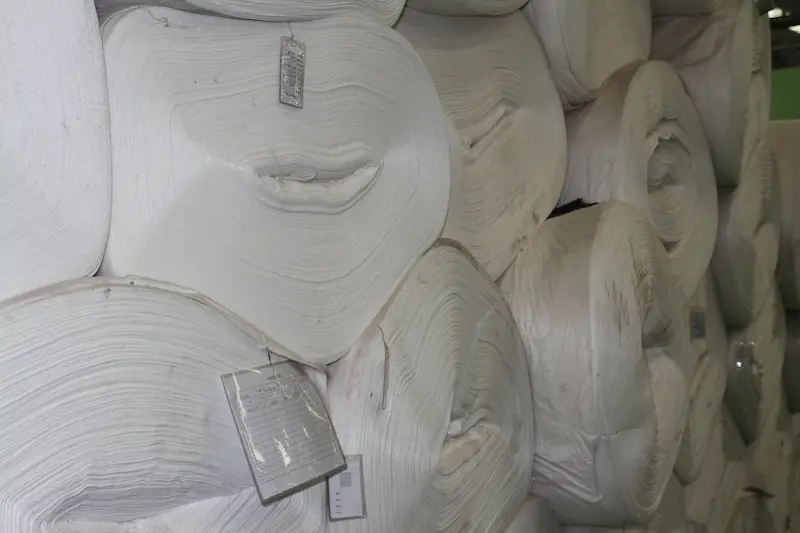
503.webp)
759.webp)
509.webp)
769.webp)